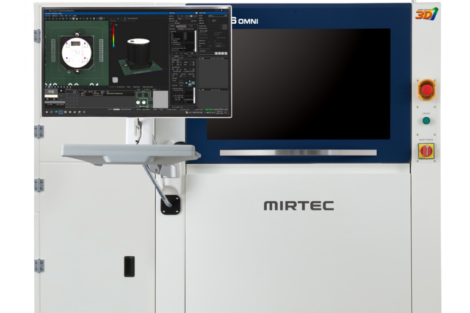With a few years of Industry 4.0 under the belt, Germany should be reveling in the success of it by now. Recent reports, however, show that overall factory productivity has continued to decline in German companies, even though investment has been made in new automation technology. This is being called the, “Productivity Paradox”. This does not come as a surprise, as investment in automation alone is still just an extension of Industry 3.0. There has been a failure to understand what Industry 4.0 really is, which represents fundamental changes to factory operation before any of the clever automation and AI (Artificial Intelligence) tools can begin to work effectively.
Michael Ford, Aegis Software, Sr. Director Emerging Industry Strategy
In the electronics manufacturing world, the worst-case scenario of effects has on production operations has come about. Higher product-mix leads to reduced productivity. It is easy to simply write this off as a cost of doing business where there is the need to provide flexibility without an increased stockholding of finished goods. This is not the complete story however, as for example, SMT machine vendors have long been making their equipment suitable for flexible production with hardware and software based solutions, where feeders can, for example, be placed anywhere on the machines, as well as techniques to provide rapid changeovers with common feeder setups for groups of similar products, and even changeovers between disparate products being achieved with the simple swap-out of removable feeder trolleys. Even without these technology aids, the manual changeover time on a fully loaded SMT placement machine time varies across companies from around five minutes to six hours, depending on the approach used. Huge losses to achieve flexibility are not a “done deal”, there are both technology and management options out there.
The “Productivity Paradox” however continues to thrive. The mix of products in production continues to increase, but additionally now, with a more volatile demand requirement, as customers of manufacturing want the ability to change delivery quantities and times immediately, whilst also not accepting the cost of holding additional buffer-stock. Factories are paying the price of the effect of fluctuating customer demand directly into their automated production lines.
To find the answer to this apparent conundrum, metrics within factories need to be known. Targets are the critical drivers for manufacturing performance. Around the factory, reports and charts explaining targets and achievement related to such things as on-time delivery, production rate, materials scrap, quality issues etc. can be found. Everyone in the factory is measured, to some extent, based on those statistics. Management want to see that each process is under control and that improvements are being steadily made. To focus on the productivity perspective, seeing what is posted in factories appears rather optimistic as compared to what would be expected when thinking about the Productivity Paradox. However, the problem lies from the metrics within the factory being based on a different data set than the German report.
The measurement of internal performance can be made in many ways. Statistics can be created to show whatever specific perspective is needed. This style of reporting started with high-volume production. Dedicated production lines were making products as fast as possible. The emphasis was on getting more throughput from each square meter of line space. Performance was based on how many placements per hour could be achieved. Extreme effort went into the optimization of machine programs. To measure the machine performance accurately however meant that machine down-time outside of machine responsibility should be ignored. If the line could potentially make 2,000 products per day, this was the rate against which performance was measured. It was unlikely however that the customer needed exactly 2,000 products per day. When the finished goods warehouse started to fill to bursting point, the line was taken down, unscheduled, perhaps an opportunity to perform “maintenance”. These times were excluded from the productivity calculation, as it was an external, uncontrolled variable from the point of view of the machine engineers. This was the start of bad habits that were to develop and broaden over the course of time, where more exclusions were made to reflect specific narrow scopes of responsibility as product-mix increased. Productivity and capacity calculations became far more complex as techniques to manage higher mix came into play.
Production planning is another “black hole” example of lost productivity, where fixed production configuration assignment rules for product allocation to line configurations by engineers have to be followed due to the sheer time and effort needed to prepare product data, thereby significantly restricting the optimization process. Legacy generic scheduling tools are useless in this environment. As production is mainly scheduled with inefficient planning tools, there is not enough time to think about whether more optimized production allocation plans. The associated losses of opportunity continue to increase due to these kinds of problems, many of which are not reported, simply due to the narrow focus of individual operations and lack of overall visibility. This is what the German reports are highlighting.
A solution to this issue is not offered by these reports. From a high-level perspective, the situation is complex and bewildering, with so many variables and barriers, many of which are buried in the technical detail of operations. Discovery of hidden issues, as well as the consequences of actions taken are very difficult to understand, never mind quantify. To start to gain sense of it all, there are two main things to address.
Next page










